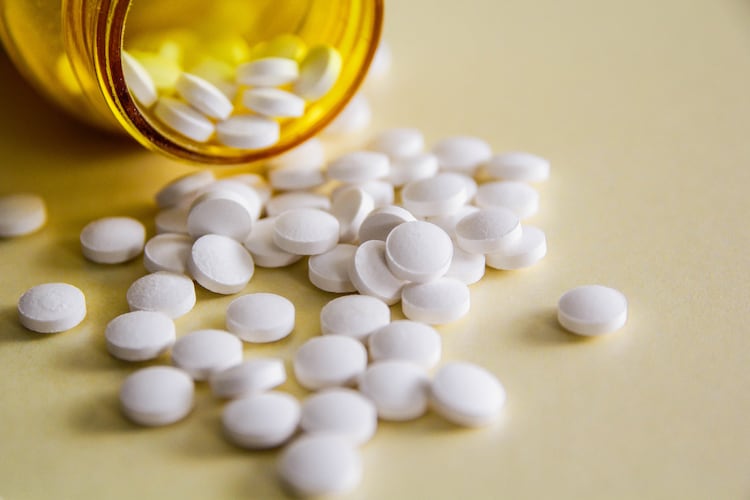India’s antibiotic breakthrough could combat drug-resistant bacteria
India has introduced its first indigenous antibiotic, nafithromycin, targeting drug-resistant pneumonia. The drug is 10 times more effective and provides eight times greater lung exposure than azithromycin.

India has launched the first indigenous antibiotic for drug-resistant infections. The drug, known as ‘Naphithromycin’, has been developed by researchers at the Biotechnology Industry Research Assistance Council (BIRAC), a unit of India’s Department of Biotechnology.
Nafithromycin, which will be used in the treatment of drug-resistant community-acquired bacterial pneumonia (CABP) in adults, will soon be available in the market under the brand name “Miknaf” distributed by Mumbai-based pharmaceutical company Volcard.
In the race to create replacement antibiotics and antifungals, the soft launch of nafithromycin is a step forward in tackling the silent epidemic – antimicrobial resistance (AMR).
Every year, drug-resistant pneumonia causes more than two million deaths worldwide. India accounts for 23% of pneumonia cases in the global community, which faces treatment challenges, including increasing resistance to drugs such as azithromycin.
For years, azithromycin has been the first-line treatment for pneumonia because it targets the germs responsible for the development of the disease. It is given to adults at a dose of 500 mg for three to 10 days. Depending on the severity of the condition, higher doses may be prescribed.

However, due to increasing resistance to azithromycin, the drug failed to work on my patients. Experts believe that with the introduction of nafithromycin, it could provide “much-needed relief” against resistant pathogens.
All about nafithromycin
Nafithromycin is the first new antibiotic of its class developed worldwide in more than 30 years. It is a novel semi-synthetic macrolide antibiotic designed to effectively combat many drug-resistant bacteria.
Its unique feature is its ultra-short, once-daily, three-day therapy, which is enabled by its ability to remain in the lungs for a long time. This comes at a critical time as antimicrobial resistance (AMR) is becoming a global health crisis, with few new treatments available.
Naphthromycin is 10 times more effective and provides eight times greater exposure to the lungs than azithromycin. It claims superior safety and tolerability and even has a clinical cure rate of 96.7%.
Developed in India after 14 years of research and an investment of Rs 500 crore, nafithromycin is designed to tackle multi-drug-resistant pathogens.

What makes nafithromycin remarkable is its ability to target both typical and atypical bacteria, and overcome resistance mechanisms that have made other antibiotics less effective.
Clinical trials conducted in the US, Europe and India show that it is ten times more effective than azithromycin and works with just a three-day course.
It is also safe, has minimal side effects, no major drug interactions, and can be taken with or without food, making it a convenient option for patients.
Union Minister Dr Jitendra Singh announced that the drug is awaiting final approval from the Central Drugs Standard Control Organization (CDSCO) for manufacturing and public use.
What does this mean for India?
Drug-resistant pneumonia has faced significant barriers to treatment, often resulting in prolonged hospital stays and increased mortality.
A once-daily, three-day regimen of nafithromycin simplifies treatment, ensures better compliance, and reduces the risk of antibiotic misuse. Drug-resistant pathogens are bacteria that do not respond to any drug. In the case of pneumonia, most patients stop responding to azithromycin.
“I am optimistic about the potential of napithromycin to save lives and improve patient care in the fight against antibiotic resistance. Its targeted action against resistant pathogens brings much-needed relief, especially in India, where respiratory infections are a major A matter of concern,” Dr Suleman Ladhani, pulmonologist at Wockhardt Hospital, Mumbai Central, told India Today Digital.

Dr Tushar Tayal, Consultant-Internal Medicine, CK Birla Hospital, Gurugram, told India Today Digital that common infections like pneumonia, tuberculosis and urinary tract infections are becoming difficult to treat, often requiring longer and more expensive Medical intervention is required.
“In severe cases, infections caused by resistant bacteria lead to high mortality rates. Antibiotic resistance also jeopardizes medical procedures that depend on effective antibiotics, such as surgery and cancer treatment,” he said.
Since Naphithromycin is manufactured in India, this medicine will become affordable and easily available for treatment.
However, Dr. Ladhani cautioned against misuse and overuse of the drug.
Dr. Ladhani said, “Although nafithromycin has immense potential, it is important to use it judiciously to prevent the emergence of further resistance. We need continued research and monitoring to monitor its effectiveness and potential side effects in the long run. Needed.”
Dr Mayank Saxena, additional director, pulmonology, Fortis Hospital, Noida, said that although it is a new antibiotic, doctors will continue to use traditional medicines before switching to nafithromycin.
“I think, we will use napithromycin as per the guidelines, but still we have to use conventional drugs. Only when we do not see any response in the patient, then we have to prescribe napithromycin to test the efficacy.” Dr. Saxena said.







